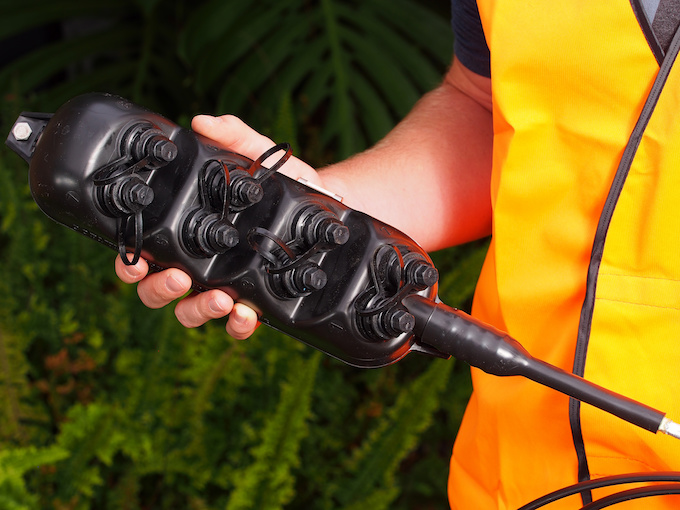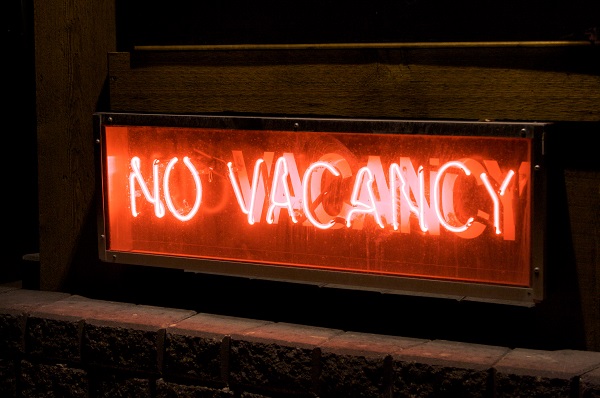
NBN is coming to you soon
How will it be delivered to your complex? FTTP, FTTN, FTTPD…what does it all even mean?
There has been a bevy of activity on the streets of Australia lately with the ramp up of the rollout of the NBN with NBN Co and Telstra vans working away to install the infrastructure required to roll it out.
I now know we are to be connected to the NBN via FTTN – fibre to the node technology. Our area on the Sunshine Coast has seen ‘nodes’ installed around town. I know this because there is a node around the corner and whilst being installed we lost our telephone line and internet connection for four days. I shudder whenever I see work in the pits, pillars and nodes around town, worried about our service being disconnected again and also our customer’s services which some have been affected also.
But what does FTTN – fibre to the node – even mean, and what will it give us? Researching this article took me straight to the NBN Co’s website where I was advised that “The nbn™ network is one of the most advanced technology projects in Australian history – but understanding how it gets to you is easy.”
‘Awesome’, I thought. ‘Easy’, they say. So here is my best attempt to unravel the terminology behind the NBN technology and how it may be delivered to your complex.
Speed – NBN Co offer the following internet connection speeds (up to) nbn 12, 25, nbn 50, nbn 100 – this is Megabits per second (Mbps).
Service providers – Service Providers will have access to these speeds for your area, however they may not offer them as available plans. They may not offer unlimited monthly data either. You need to shop around and get the fastest speed and the most data per month you can, particularly if you use the connection for your guest wifi system. Unlimited monthly data is a must. Once the NBN infrastructure is completed in your area, the Service Provider will manage the final connection to your complex.
You don’t have to stay with your current Service Provider (unless contracted). If you’re under contract see if it can be upgraded to an NBN plan. We’re hearing stories of providers scaring managers into signing up with them to the NBN as they’re being told their ADSL service will be turned off soon and they’ll lose their telephone number. ADSL and PSTN services will be turned off approximately 18 months after the NBN is available in your area and you should be given plenty of notice. Ensure you’re ready and plan for this.
Technology – How you receive the NBN will depend on your location. NBN Co uses a variety of different technologies.
FTTN –Fibre to the node – Fibre to the node is where fibre is run to a newly built street cabinet or “node”. It allows the NBN network signal to travel over optic fibre from the exchange to the node and connect with the existing copper network to reach your premises.
FTTP – Fibre to the premises – Fibre to the premises is where a fibre optic line will be run from the nearest available node, to your premises. FTTP also requires an NBN network device to be installed inside your complex and requires power to operate and only installable by an approved NBN Installer or service provider.
FTTB – Fibre to the building – Fibre to the building is generally used when connecting an apartment block or similar type of building to the NBN network. A fibre optic line is run to the buildings communications room and existing technology in the building is used to connect apartments. The fibre node in the building communications room is usually a secure cabinet.
HFC – Hybrid Fibre Coaxial – Hybrid Fibre Coaxial is used where the existing ‘pay TV’ or cable network can be used to reach the premises. A HFC line will be run from the nearest available fibre node to your premises and an NBN network device will need to be installed at the point where the HFC line enters your premises and requires power to operate and only installable by an approved NBN Installer or service provider.
FTTdp –Fibre to the distribution point – Fibre to the distribution point sits somewhere between FTTN and FTTP in speed, cost and complexity. It’s a new technology that may feature heavily in the future NBN roll out. It alludes to being cheaper than FTTP, faster than FTTN and quick to roll out. FTTdp brings the fibre almost to complexes doorsteps, with the distribution point referring to the individual junction box in the telecommunications pit in the street outside each property. With fibre running to within metres of the property means near-gigabit network speeds can be achieved over the very short run of copper between premises and pit and an upgrade to full fibre to the premises is easily possible in the future. In 2018, Fibre to the Curb FTTC will replace the term Fibre to the Distribution-Point FTTdp.
Fixed Wireless connections and Sky Muster services – These types of connections are used mostly in regional, rural and remote areas, where premises are spread out geographically over many square kilometres.
Fixed Wireless – Fixed Wireless is a form of connection where data is sent from a transmission tower located as much as 14kms away and travels wirelessly to an antenna on the roof of the complex. It requires an NBN network device to be installed at the point where the cable from the roof antenna enters your complex and requires power to operate and only installable by an approved NBN Installer or service provider.
SkyMuster – The connection of some remote and rural locations services can be delivered via the Sky Muster satellite. A satellite dish is installed on the premises and receives the NBN network signal from the Sky Muster satellite. Sky Muster connections also require an NBN network device to be installed at the point where the cable from the roof satellite dish enters your complex and requires power to operate and only installable by an approved NBN Installer or service provider.
I hope I’ve cleared up a few things. That was easy, wasn’t it?
My recommendation is to put your address in the NBN Co’s website and it should tell you when your address has NBN available and the technology that will be used to deliver it. However, with so many different technologies being used to roll out the NBN and some of them being replaced, the information may vary.
Don’t settle for the first Service Provider’s quote. Shop around and get what is best for your business and guest wifi system. Be prepared for the changeover. Here’s hoping the NBN is the panacea we have all been waiting for.
Director Judy Senn launched Time Out Internet in September 2011. She has over twenty years of IT reseller, hardware and software distribution, sales and business development experience.







